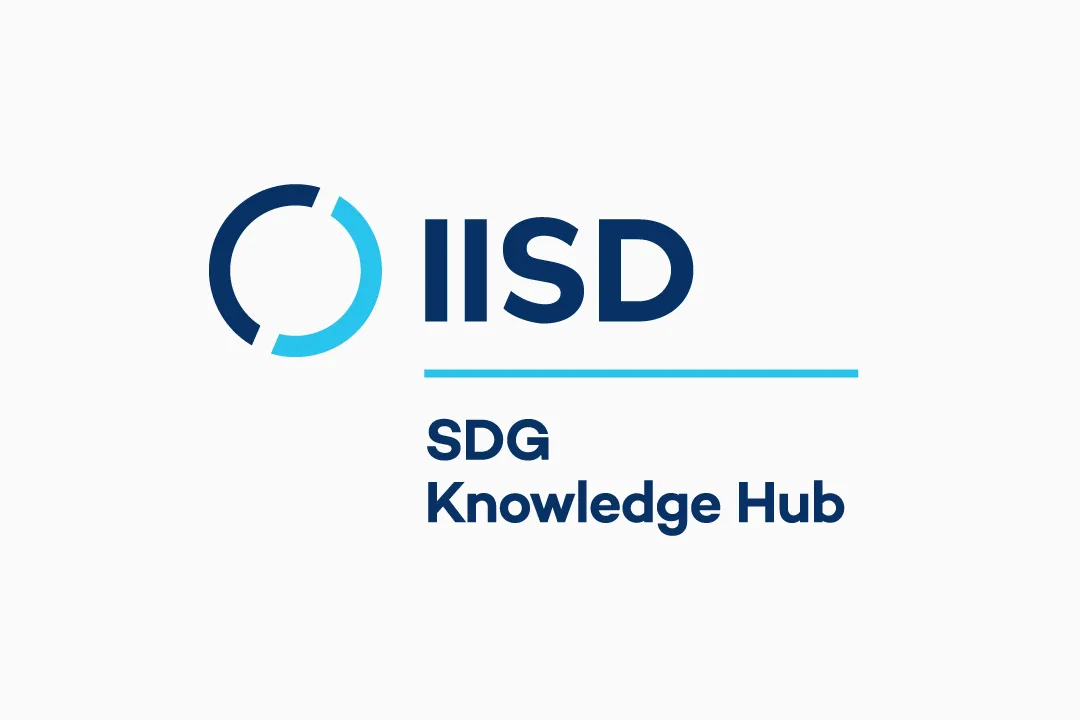10 March 2017: The UN Statistical Commission agreed on a draft resolution on the global indicator framework for the Sustainable Development Goals (SDGs) and targets of the 2030 Agenda for Sustainable Development, and recommended it to the UN Economic and Social Council (ECOSOC) for adoption. The framework includes the initial set of global indicators that will be refined annually, comprehensively reviewed in 2020 and 2025, and complemented by indicators at the regional and national levels to be developed by Member States.
The UN Statistical Commission held its 48th session (UNSC 48) from 7-10 March 2017, in New York, US, during which it also marked its 70th anniversary. The draft resolution, titled ‘The work of the UN Statistical Commission pertaining to the 2030 Agenda for Sustainable Development,’ was adopted on 10 March following informal consultations leading up to the meeting and throughout the week. The resolution has no programme budget implications (PBI), the Chair noted.
ECOSOC would adopt the indicator framework developed by the IAEG-SDGs as a “voluntary and country-led instrument.”
By the resolution, ECOSOC would adopt the indicator framework developed by the IAEG-SDGs, which it says the Commission agrees as a “voluntary and country-led instrument.” It notes that the indicators will be refined yearly, and comprehensively reviewed by the Commission at its 51st session in 2020 and 56th session in 2025. ECOSOC would request the UN Secretary-General to continue maintaining the global indicator database to inform the yearly progress report on the SDGs, and to ensure transparency on the data, statistics and metadata presented on countries and used for the regional and global aggregates. ECOSOC would recommended the resolution to the UNGA for adoption.
On capacity building for statistics, the text welcomes the Cape Town Global Action Plan for Statistics for Sustainable Development Data (CTGAP) that was launched at the first UN World Data Forum on 18 January 2017 and endorsed during UNSC 48, which provides the framework for discussion, planning, implementation and evaluation of statistical capacity building pertaining to the 2030 Agenda. The draft stresses the need for the Commission to inform discussions at the UN High-level Political Forum on Sustainable Development (HLPF) regarding statistical gaps and capacity-building needs related to the SDGs. It also urges countries, UN funds and programmes, specialized agencies, the UN Secretariat, the Bretton Woods institutions, international organizations, and bilateral and regional funding agencies to intensify their support for strengthening data collection and statistical capacity building.
In a discussion on 7 March, countries expressed concern about the indicators currently classified as Tier III, due to the lack of an agreed methodology for their measurement. Sweden highlighted in particular that all of Goal 13’s targets have indicators in Tier III, and said countries should develop and use regular climate statistics until the proposed indicators are defined. Russia said the regular review of the indicator framework will be crucial to the development of Tier III indicators, which comprise a third of all indicators. He stressed the need to speed up the development of methodology for indicators currently classified as Tier III.
Further on the refinement and review process, Austria, chair of the UN World Tourism Organization’s (UNWTO) Committee on Statistics and the Tourism Satellite Account (TSA), expressed concern about indicators 8.9.2 and 12.b.1, noting that they need further consideration and refinement. Ukraine welcomed the review mechanism, noting its belief in the need for additional indicators.
Several countries highlighted their national or regional initiatives with regard to the indicators. South Africa said the African Group has “costed the indicators and mapped them onto Agenda 2063.” Samoa highlighted a meeting held in New Caledonia in March, which identified 190 indicators that are “more than enough to track the SDGs in our part of the world.” Sri Lanka said it is the first Asia-Pacific country to have a separate ministry for sustainable development, while Myanmar noted that its SDG coordination mechanism is performed by the vice-president and minister of planning and finance, and that it has produced an SDG data assessment report, an SDG baseline data report, and alignment of SDG concepts with national and regional development plans. Jordan said it has established a ministerial committee to follow up on implementation of the indicators and prepare its 2017 report to the HLPF under the voluntary national reviews (VNRs).
During the week, some countries said SDG indicators “should not go against national culture and legislation,” with Iran highlighting that “national statistics offices need to be the sole point for the production and dissemination of statistics.” The text stresses that official statistics and data from national statistical systems constitute “the basis needed for the global indicator framework,” while recommending that national statistical systems explore ways to integrate new data sources into their systems to satisfy the data needs of the 2030 Agenda, as appropriate. It further stresses the role of national statistical offices (NSOs) as the coordinator of national statistical systems.
Throughout the session, many countries stressed the need to give their consent for international organizations to make estimates on their behalf. The resolution calls upon the UN system, including the UN Statistics Division (UNDS), regional commissions and international agencies, to avoid imputation unless specific country data are available for reliable imputations following consultations with concerned countries and through transparent methodologies. It urges international organizations to base the global review on data produced by national statistical systems. If specific country data are not available for reliable estimation, it says international organization shall consult with concerned countries to produce and validate modeled estimates, before publication.
The Group of the G-77 and China (G-77/China), speaking for the second time in the history of the Commission, and supported by many countries including China, Egypt, Indonesia, Iran and the Philippines, asked for the resolution to reflect the principle of common but differentiated responsibilities (CBDR), the need for support for capacity building for NSOs in developing countries, national ownership of the implementation of the 2030 Agenda, and respect for policy space for countries. The agreed resolution calls upon the UN system to support national efforts in building and strengthening national statistical capacity, in particular in developing countries. It also notes the national ownership of the implementation of the 2030 Agenda.
In the meeting to take action on the draft resolution, Uganda supported by Cameroon and others stressed the importance of the UN Regional Commissions in working with NSOs to prepare estimates, and suggested revising the text to specify this intermediary role. Suriname and others responded, however, that the reference to “relevant UN bodies” was sufficient. India affirmed that “nobody can substitute for the consent of the country.”
Sweden and the US asked for the text to reflect the decentralization of some national statistical systems, such as by referring to “national agencies” instead of “national statistical offices.” Iran opposed. The agreed resolution refers to “national statistical systems.”
Delegations taking the floor to support or “strongly support” the resolution included Switzerland, the EU, Mexico, Germany, US, Japan, Russia, Italy, Latvia, Brazil, China, New Zealand, Argentina, Colombia, Philippines, Samoa, the Republic of Korea, Uruguay, South Africa, Denmark, Norway, Venezuela, Bahrain, Iran, Peru, Bangladesh, Sudan, Morocco, Israel, Indonesia, Hungary, Dominican Republic, Myanmar, Sri Lanka, Thailand, Palestine, Malta, Angola, Paraguay, Panama, and the UN Economic and Social Commission for Western Asia (ESCWA).
New Zealand said that the UNSC has the rare experience of knowing both its destination, and the journey needed to reach it, and that the draft resolution captures both aspects. Canada said it looks forward to “moving on with the business of implementation and building capacity,” and noted that it will host the fifth meeting of the IAEG in Ottawa, at the end of March 2017.
Iran said it is ready to support and implement the resolution “based on our national priorities.” Paraguay stressed that it will need the support of the UN Statistics Division and UN system. Panama said each country’s speed of implementation will differ.
When the UNGA adopted the 2030 Agenda for Sustainable Development in September 2015, it decided that the SDGs and targets will be followed up and reviewed using a set of global indicators developed by the IAEG-SDGs, to be agreed by the UNSC and adopted thereafter by ECOSOC and the UNGA. In this context, the UN Statistics Division hailed the Commission’s agreement on the draft resolution as the “last piece for full implementation” of the SDGs.
The Commission decided that its next session (UNSC 49) will take place from 6-9 March 2018, in New York, US. Its agenda will include new items on aging and age-related data, and open data, among other new topics. [Final Draft Resolution] [UNSC 48 Documents] [IISD Sources] [SDG Knowledge Hub Story on Preparation of Draft Resolution] [Tier III Indicators and Work Plans] [SDG Knowledge Hub Story on UN World Data Forum]


